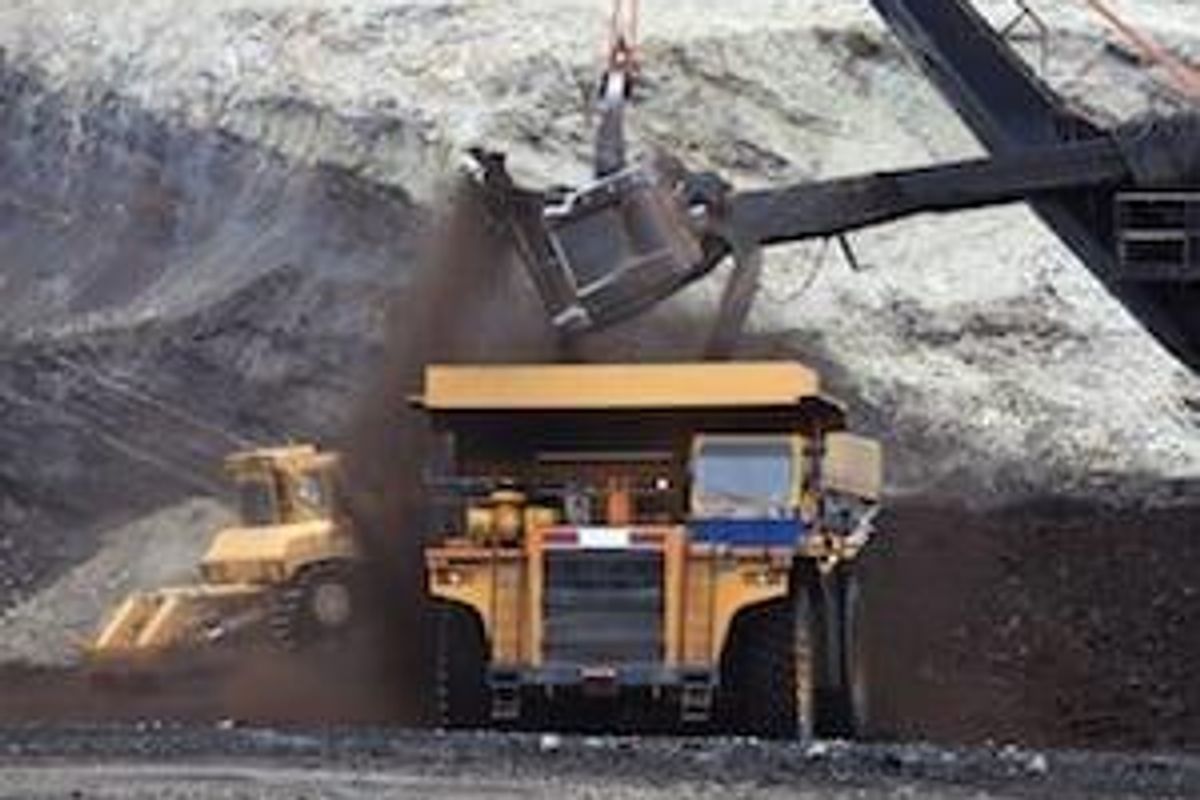How Investors and Mining Companies Benefit from Stockpile Projects

Stockpiles can generate quick cashflow and can finance future projects. Learn more here about the many benefits of these assets.
When mining companies acquire previously mined projects, stockpile resources may be left over from the previous operator at the surface or underground.
Stockpiles may contain mineable resources, and when they do there are many benefits to production, as income generated from stockpiles can help fund further exploration, infrastructure and production initiatives.
Standard stockpiles are the most generic type of stockpile, and are made by standard bucket loading and dumping techniques. Ramp stockpiles are constructed and piled high using a narrow ramp and are optimal for storing large amounts of material in a very limited area. A third common type of stockpile is a bin stockpile. Materials are stored in a row of three-sided bins enclosed inside hard walls. Bin stockpiles are often the best way to keep types of materials separate from each other.
Aside from being one of the most efficient ways to restart a project, stockpiles are an effective way to store large quantities of material. One of the first steps a company takes when discovering a stockpile is assessing the economic value of the leftover resource, and the geological factors that determine the potential viability of the resource.
Drilling and density-sensing equipment is used to determine the density of the material. Density data is then used to calculate the overall tonnage of the stockpile. But due to their irregular shape, stockpiles are hard to measure, especially from the ground. In recent years, drone photography and laser-based measuring have become popular ways to collect stockpile data and manage inventory.
Of the 40 largest mining companies profiled in PWC’s mining report for 2015, nearly half use drone photogrammetry software as part of their mining workflow. This method of measuring volumes, managing inventory and providing future data allows for a more accurate assessment of stockpile resources.
Stockpile projects can finance future exploration
Stockpile mining projects can cover all types of metals and minerals. One of the largest uranium mines in the world is a stockpile mining project at Australia’s Ranger mine, operated by Energy Resources of Australia (ASX:ERA). In 2017, the company produced 2,294 tonnes of uranium oxide from stockpiled ore.
Kirkland Lake, Ontario is the site of the Mirado mine and the Mirado Mine Stockpile Project, which is operated by Orefinders Resources (TSXV:ORX). The company recently announced that the Mirado Mine Stockpile Project is considered economically viable, with a 158 percent internal rate of return with a payback on capital after seven months.
The build up of a stockpile requires careful treatment to ensure the right grade is correctly modelled, and that the right value of the stockpile is reported on balance sheets. When calculated properly, companies like Vangold Mining (TSXV:VAN,OTCMKTS:VGLDF) can use potential revenue from stockpile resources to help finance further exploration and production.
Vangold is a development-stage silver and gold company focused on bringing the Mexican El Pinguico mine to near-term production with its stockpile mining project.
“The El Pinguico mine is a historic high-grade producer, possessing in-situ high-grade silver and gold mineralization with accessible mining infrastructure to a depth of up to 700 meters, to be confirmed by drilling,” said Cameron King, Vangold’s president and CEO. “The completion of a base-case development scenario will be a significant milestone in understanding the available economics of the stockpiles and cost related in new mine development.”
Unlike traditional mining projects, El Pinguico is unique in that it has over 700,000 tonnes of stock ore at surface and underground remaining from historical mining done on the property in the early 1900s. This includes a 200,000-tonne waste pile with an average grade of 2 g/t gold equivalent. While that is considered economically interesting at the current gold price, production cut-off grade was 15 g/t gold, making anything below that value waste.
The mine was in production from 1908 to 1913, and is reported to have produced more 2.3 million ounces of silver within 16 months across 1908 and 1909. The mine closed down due to the Mexican Revolution, leaving the 700,000 tonnes of stockpiled ore. Today, the mine is easily accessed by roads and highways and is in close proximity to mining infrastructure, water and power sources.
2017 assay results for the underground stockpile include results of 3.78 g/t gold and 558 g/t silver over 2.75 meters and 15.7 g/t gold and 1,475 g/t silver over 2 meters. Following further drilling on the area and the development of an NI 43-101 inferred resource and preliminary economic assessment, the company expects to begin production in 2019, following environmental assessments, the development of a PEA and ensuring the safety of the mine’s infrastructure.
“There is a lot of cash in these rocks,” King said. “In the early 1900s, the miners were only mining ore that was 15 equivalent grams gold per tonne. The cut-off grade was 15 grams because gold at the time was US$20 per ounce, and so anything below that grade was uneconomic. With prices as they are now, the 200,000-tonne surface waste pile is much more economic.”
What investors should look for
A company operating a stockpile mining project is positioned to generate cashflow by producing resources from a stockpile. Since the costly step of mining has already taken place, the company can focus on assessing the value of the resource as well as establishing a market for its future product.
Investors can benefit when a company processes stockpile resources with a quick, low-cost mining operation.
This article was written according to INN editorial standards to educate investors.




